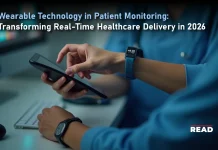In today’s fast-paced world, where efficiency and safety are paramount, vehicle tracking devices have become indispensable for individuals and businesses. This tracking device for vehicles offers real-time monitoring and tracking capabilities, providing valuable insights into the location, movement, and performance of vehicles.
Whether it’s for personal use, fleet management, or security purposes, vehicle GPS tracking devices have revolutionized the way we manage and safeguard our vehicles. According to Extrapolate, the global Vehicle Tracking Device Market is estimated to reach a valuation of $98.19 billion by 2032. This blog post discusses the mechanism, definition, benefits, and more.
What is a Vehicle Tracking Device?
A vehicle tracking device is a compact hardware component installed in a vehicle that uses GPS (Global Positioning System) technology to monitor and track the vehicle’s location, movement, and performance. These devices operate with GPS fleet tracking software, transmitting data to a software platform accessible to fleet operators in real-time.
They gather information on vehicle location, driver behavior, engine diagnostics, and other telematics data, which can be viewed through graphical interfaces and reports. Vehicle tracking devices are essential for fleet management, offering real-time updates, alerts, and insights that enable businesses to make informed decisions, enhance operational efficiency, and ensure the safety and compliance of their fleets.
Some of the best vehicle tracking devices available in the market include LandAirSea 54 GPS Tracker, Tracki 4G Mini GPS Tracker, Kayo Simple GPS Tracker, Cube Trackers GPS Tracking Device, and more.
How Does a Vehicle Tracking Device Work?
GPS tracking devices for vehicles provide up-to-date information on a vehicle’s position, speed, direction, and distance. These systems rely on satellite navigation data to communicate between satellites and tracking devices, allowing users to access real-time information about the vehicle’s location, speed, direction, distance, and time. GPS technology enables vehicle tracking systems to function even in areas with limited cellular network coverage, as they depend on satellites for location data.
Additionally, vehicle tracking systems can collect and transmit various data, including driver behavior, engine management, and vehicle diagnostics, offering businesses valuable insights into their field operations. These devices can be powered by the vehicle’s onboard diagnostics (OBD-II) connector, a cigarette lighter, or other internal power sources.
Benefits of Vehicle Tracking Devices
Vehicle tracking systems offer numerous impactful advantages. Here are some key benefits:
Reduce Insurance Costs
Vehicle tracking systems can monitor deviations from a vehicle’s predetermined route, increasing the likelihood of recovery in case of theft. They also provide valuable information on driver behavior, encouraging responsible driving habits and potentially reducing insurance costs by up to 30%.
Reduce Fuel Costs
Businesses using fleet tracking systems benefit from significant savings in fuel expenses due to improved route mapping, reduced idling, and enhanced driver behavior. Data from fleet tracking helps identify optimal routes that save time and resources, improving driver efficiency and cutting unnecessary fuel costs.
Enhanced Safety and Security
Personal tracking devices for vehicles play a crucial role in promoting safer driving habits and providing immediate notifications in cases of unauthorized vehicle access. They also assist in monitoring and recovering assets in the event of theft.
Efficient Route Planning
Vehicle tracking systems provide valuable data for optimizing route planning, ensuring drivers take the shortest paths to their destinations. This not only saves time but also minimizes fuel costs.
Implementing a vehicle tracking system offers businesses a range of benefits, from reducing operational costs to enhancing safety and efficiency in fleet management.
How Does the Vehicle Tracking System Work?
The vehicle tracking system operates through a loop involving GPS, GSM/GPRS, digital maps, and specialized software. Here’s how it works:
- GPS and Satellite Communication: Mobile data devices installed on vehicles receive two pieces of information from satellites: real-time satellite transmission information and the satellite’s position in orbit at that time. This GPS data is used to determine the vehicle’s precise location.
- Transmission of Telemetric Information: The mobile data devices also transmit telemetric information, such as vehicle temperature, to control and communication centers via the GSM/GPRS network. This network ensures real-time transmission of data between the vehicle and the monitoring center.
- Data Compilation and Storage: At the control and communication center, the received information is compiled using specialized software and recorded in a database on servers. This data includes real-time and historical records of vehicle locations and telemetric data.
- User Access and Control: On the user side, the vehicle’s location and historical data can be accessed and tracked using specialized software. Users can view this information on a computer, smartphone, or tablet, allowing them to visualize vehicle locations, modify alarms, and manage vehicle statuses.
This structure forms the foundation for the operation of vehicle tracking systems, providing real-time tracking, historical data analysis, and enhanced management capabilities for businesses and fleet operators.
Final Words
The world of transportation has been revolutionized by the introduction of vehicle tracking devices. These technological marvels not only boost efficiency and streamline operations but also enhance safety and security on the road. As we’ve uncovered the numerous benefits of these systems, including real-time monitoring and route optimization, it’s evident that they have become essential tools for both individuals and businesses alike.
Browse More Posts:-
Data Center Power Market Boosting the Growth Worldwide
Data Center Power Market to Develop New Growth Story
Data Center Power Market Scenario – The Competition Is Rising




